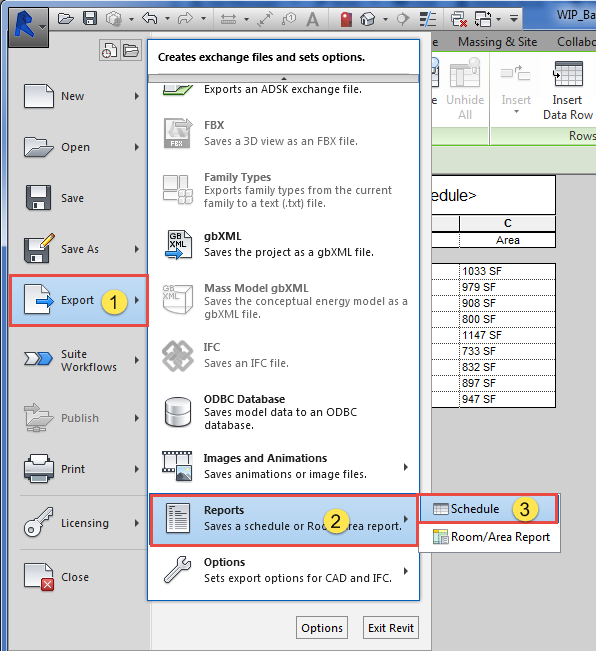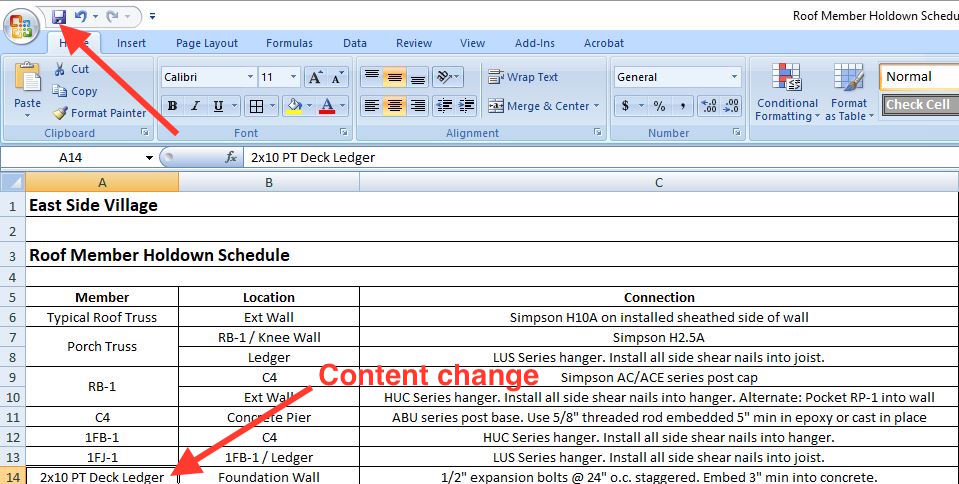Make Best Use Of Effectiveness with Top-Rated Revit Plugins
Excel-to-Revit: A Game-Changing Operations for Architectural Layout - Introducing the Tricks
Are you tired of costs hours on architectural style? Look no more! Presenting excel-to-revit, the game-changing process that will certainly change your design process. With excel-to-revit combination, you can simplify your architectural style, unlock effectiveness, and maximize cooperation within your team. In this post, we will reveal the secrets of this effective tool, revealing you how it can change your layout tasks. Get prepared to take your building layout to the next level with excel-to-revit!
The Power of Excel-to-Revit Combination

Visualize the ease of being able to edit and update task data in Excel, and instantly see those changes mirrored in your Revit version. Say goodbye to hands-on data entry or laborious updates. With Excel-to-Revit combination, you can conserve time and minimize errors by leveraging the power of Excel's functions and solutions to immediately generate exact data in Revit.
Not only does this combination enhance efficiency, but it additionally improves collaboration among group members. You can conveniently share Excel data with associates, who can after that import the data into their Revit designs. This promotes a seamless exchange of info and guarantees that everybody is functioning with the most current data.

Streamlining Architectural Style With Excel-To-Revit
Streamlining building style is simplified with using Excel-to-Revit (revit tool). With this powerful combination, you can maximize your operations and conserve valuable time throughout the design process. By leveraging the abilities of Excel and Revit, you can perfectly transfer information in between both systems, eliminating the need for hands-on data entry and minimizing the threat of mistakes
Excel-to-Revit permits you to import and export information effortlessly, allowing you to conveniently upgrade and change your building styles. You can develop timetables, calculate quantities, and create records in Excel, and after that transfer that data directly into your Revit model. This assimilation ensures that your style information is constantly updated and integrated, removing the need for hand-operated updates and minimizing the chances of variances.
By using Excel-to-Revit, you can also make the most of the powerful computational capacities of Excel. You can perform complex estimations, evaluate data, and automate recurring tasks, all within Excel. After that, with just a couple of clicks, you can import the results back into Revit, enabling you to make enlightened style choices and maximize your building styles.
Opening Efficiency: Checking Out the Excel-to-Revit Operations
Maximize your productivity by flawlessly integrating Excel and Revit for a much more effective workflow. With the Excel-to-Revit workflow, you can unlock an entire new level of performance in your architectural style process. By utilizing the power of Excel's data administration abilities and combining it with the flexibility and accuracy of Revit, you can simplify your design process and save valuable time.
One of the key benefits of this assimilation is the capability to import and export information in between Excel and Revit. This means that you can conveniently transfer job info, such as space schedules or product amounts, from one software application to the various other, eliminating the demand for manual information entry and minimizing the chances of mistakes. You can additionally create customized solutions and calculations in Excel to automate recurring tasks and perform complex calculations, which can after that be seamlessly incorporated into your Revit versions.
Additionally, the Excel-to-Revit operations enables far better sychronisation and cooperation between group members. With Excel functioning as a central data center, multiple employee can work with various aspects of the job concurrently, upgrading and sharing info in real-time. This not just improves interaction but additionally ensures that everybody is working with one of the most current information, removing the risk of variances.
Making Best Use Of Partnership: Excel-to-Revit for Architectural Teams
By flawlessly integrating Excel and Revit, architectural groups can greatly improve cooperation and achieve a lot more reliable layout outcomes. When utilizing this powerful operations, you can easily move data in between Excel spread sheets and Revit models, simplifying the style process and improving interaction amongst staff member. With Excel-to-Revit assimilation, you can effortlessly import job information, such as room routines, product quantities, and task specifications, directly into Revit, eliminating the need for hands-on data entrance and minimizing the possibilities of mistakes. This smooth link enables for real-time updates, making certain that every person is functioning with one of the most current details and staying clear of disparities in between various papers.
Furthermore, by leveraging Excel's effective calculation capabilities, you can carry out complicated computations and evaluation on your layout data, supplying beneficial insights and driving educated decision-making. This assimilation also allows you to export information from Revit to Excel, enabling you to develop extensive records, graphes, and graphs for discussions and analysis. This joint workflow promotes click here for more efficient interaction and sychronisation amongst employee, as Excel serves as a central center for information administration and sharing.
Total, by embracing the Excel-to-Revit workflow, building groups can accomplish greater levels of partnership, effectiveness, and accuracy in their style procedure. revit tool. This combination encourages groups to interact seamlessly, making certain that everybody gets on the same page and adding to the success of the project
Revealing the Keys of Excel-to-Revit Integration

One of the keys of Excel-to-Revit integration is the capability to utilize the power of formulas and computations in Excel to drive criteria and generate complex geometries in Revit. You can link Excel spread sheets to Revit family members, allowing you to input data straight right into the spread sheet and have it automatically update in the Revit design. This simplifies the design process and makes sure precision and uniformity across the project.
One more key is the capacity to create customized timetables and records in Excel, making use of data drawn out from Revit. This permits you to evaluate and picture project info in a means that is not possible within Revit alone. You can conveniently create amount liftoffs, price estimates, and job timelines, providing important understandings for decision-making and task monitoring.
On top of that, Excel-to-Revit combination allows effective cooperation among employee. Several individuals can service the very same Excel spread sheet simultaneously, making it easier to coordinate and track changes. You can additionally utilize Excel's commenting function to offer comments or communicate design alterations.
Verdict
By combining the power of Excel and Revit, architects can now work extra efficiently, conserve time, and produce much better layouts. Start integrating excel-to-revit assimilation into your building design process today and reinvent the means you work.
With simply a couple of clicks, you can import the outcomes back right into Revit, permitting you to make enlightened design choices and optimize your building layouts.
By making use of the power of Excel's information administration abilities and integrating it with the flexibility and precision of Revit, you can streamline your layout procedure and conserve valuable time.
By flawlessly incorporating Excel and Revit, architectural teams can substantially enhance partnership and attain much here are the findings more effective layout end results. When utilizing this powerful workflow, you can conveniently transfer data between Excel spread sheets and Revit versions, improving the design procedure and enhancing interaction among group members.In addition, by leveraging Excel's powerful estimation abilities, you can perform complicated calculations and evaluation on your design information, driving and supplying important understandings informed decision-making.